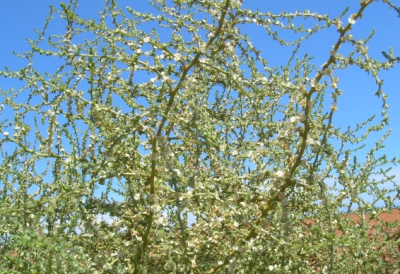Russian Thistle Noxious Weed Identification and Description
The Russian thistle is a weed that grows in fields, pastures, and rangelands throughout the year. You’ll see it in patches of land that’s been disturbed, in ditch banks, and much more. Non-native to
Knowing It’s a Russian Thistle Noxious Weed Problem
A native of Russia, the thistle will grow throughout the year and can reach 3ft in height. The stems will stand fully erect, usually with branches and red/purple striping. When the seedlings first emerge, they can look like grass, except for the leaves having a scale-like appearance and the spines standing stiff. Eventually the flowers will grow with floral bracts, making them stand out. As the Russian thistle dries, it will create a tumbleweed, which rolls across landscape in the winds. The stiff spines can be sharp when pulling the weed from the ground. Gloves are best worn.
Damage to the Environment By Russian Thistle Noxious Weed
Russian thistle can be beneficial when young, but it becomes a pest as it matures. It releases nitrates at a toxic level, creating breathing problems in cattle and sheep, causing sudden death in many. Sheep can also develop kidney failure from eating the pest. It also causes problems for the growing of plants and food due to the nitrates in the soil. The only creatures that benefit when the weed matures are pheasants. The birds gain cover to protect them from hunters and other prey.
Managing Russian Thistle Noxious Weed
The good thing about the weed is that it can be pulled out when young to handle. You want to do this before the seeds are produced. Once seeds are produced, you’ll need to cover them to prevent them from spreading. Herbicides are also beneficial for managing the growth of the weeds.
For Russian thistle noxious weed control, contact SprayTech, Colorado noxious weed control specialists, for a free estimate.

